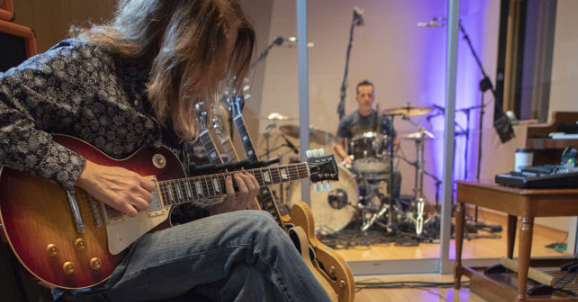Products Category
- FM Transmitter
- 0-50w 50w-1000w 2kw-10kw 10kw+
- TV Transmitter
- 0-50w 50-1kw 2kw-10kw
- FM Antenna
- TV Antenna
- Antenna Accessory
- Cable Connector Power Splitter Dummy Load
- RF Transistor
- Power Supply
- Audio Equipments
- DTV Front End Equipment
- Link System
- STL system Microwave Link system
- FM Radio
- Power Meter
- Other Products
- Special for Coronavirus
Products Tags
Fmuser Sites
- es.fmuser.net
- it.fmuser.net
- fr.fmuser.net
- de.fmuser.net
- af.fmuser.net ->Afrikaans
- sq.fmuser.net ->Albanian
- ar.fmuser.net ->Arabic
- hy.fmuser.net ->Armenian
- az.fmuser.net ->Azerbaijani
- eu.fmuser.net ->Basque
- be.fmuser.net ->Belarusian
- bg.fmuser.net ->Bulgarian
- ca.fmuser.net ->Catalan
- zh-CN.fmuser.net ->Chinese (Simplified)
- zh-TW.fmuser.net ->Chinese (Traditional)
- hr.fmuser.net ->Croatian
- cs.fmuser.net ->Czech
- da.fmuser.net ->Danish
- nl.fmuser.net ->Dutch
- et.fmuser.net ->Estonian
- tl.fmuser.net ->Filipino
- fi.fmuser.net ->Finnish
- fr.fmuser.net ->French
- gl.fmuser.net ->Galician
- ka.fmuser.net ->Georgian
- de.fmuser.net ->German
- el.fmuser.net ->Greek
- ht.fmuser.net ->Haitian Creole
- iw.fmuser.net ->Hebrew
- hi.fmuser.net ->Hindi
- hu.fmuser.net ->Hungarian
- is.fmuser.net ->Icelandic
- id.fmuser.net ->Indonesian
- ga.fmuser.net ->Irish
- it.fmuser.net ->Italian
- ja.fmuser.net ->Japanese
- ko.fmuser.net ->Korean
- lv.fmuser.net ->Latvian
- lt.fmuser.net ->Lithuanian
- mk.fmuser.net ->Macedonian
- ms.fmuser.net ->Malay
- mt.fmuser.net ->Maltese
- no.fmuser.net ->Norwegian
- fa.fmuser.net ->Persian
- pl.fmuser.net ->Polish
- pt.fmuser.net ->Portuguese
- ro.fmuser.net ->Romanian
- ru.fmuser.net ->Russian
- sr.fmuser.net ->Serbian
- sk.fmuser.net ->Slovak
- sl.fmuser.net ->Slovenian
- es.fmuser.net ->Spanish
- sw.fmuser.net ->Swahili
- sv.fmuser.net ->Swedish
- th.fmuser.net ->Thai
- tr.fmuser.net ->Turkish
- uk.fmuser.net ->Ukrainian
- ur.fmuser.net ->Urdu
- vi.fmuser.net ->Vietnamese
- cy.fmuser.net ->Welsh
- yi.fmuser.net ->Yiddish
Try Something Different – Discovering New Favorite Gear
Date:2020/2/22 15:49:28 Hits:

Most of us have ’em — signal chains that are our go-to setups for certain instruments. If you have a lot of stuff available (dozens of mics and many brands of preamps, EQs, and compressors), you might have a favorite chain for each of the things you would record on a typical session. And that’s fine, as far as it goes. You use the stuff that you know will give the sound you’ve come to expect on a given instrument. But you might consider changing it up from time to time. I’m not suggesting that you change everything in your setup every time you record, but it’s not a stretch to experiment with a couple of things on each session.
There are a few reasons to make experimenting with signal chains a regular part of your workflow in the studio: the first is that you may well find new approaches to recording a given instrument that you like better, which in turn frees up tools (microphones, preamps, etc.) to try in other signal chains. And if nothing you try sounds as good as your normal signal chain, you’ve learned something too — that you really like what you’ve been using better than anything else you’ve tried so far.
Here’s what I mean — my first acoustic guitar recordings (many years ago) were done with a pair of Shure SM81s. Since then, I’ve used (and liked) probably 20 or 30 different pairs of microphones on acoustic guitars, from vintage Neumann and AKG small-diaphragm mics to new small-diaphragm mics from DPA, Schoeps, and Telefunken, large-diaphragm microphones from Telefunken, Shure, Manley, and Mojave, even ribbon mics from Royer and AEA. I’ve tried all sorts of mic placements, mic patterns, and types of microphones — including dynamic mics. The result is that these days, I’ll choose my mics based on the style of music, the guitar being used — and the guitarist who’s playing the instrument — rather than whatever standard setup I might have once used. The same spirit of experimentation works with everything else, from drums to amps to horn and string sections.
I’ve recorded with built-in mic preamps, ultra-clean preamps, tube preamps, transformer preamps, and transformerless preamps. At the end of this trip, I’ve not only learned that I have many favorites, but also that the subtle (and not-so-subtle) differences between mics and preamps — and how those preamps react to specific microphones — have given me many paths to excellent results. I no longer think of a go-to signal path for each instrument; instead, I look at my options that day and choose a signal path that I know will work for that instrument on that project.
Try it yourself — as you set up for your next session, leave a few minutes to experiment. The results may surprise you!
Leave a message
Message List
Comments Loading...





